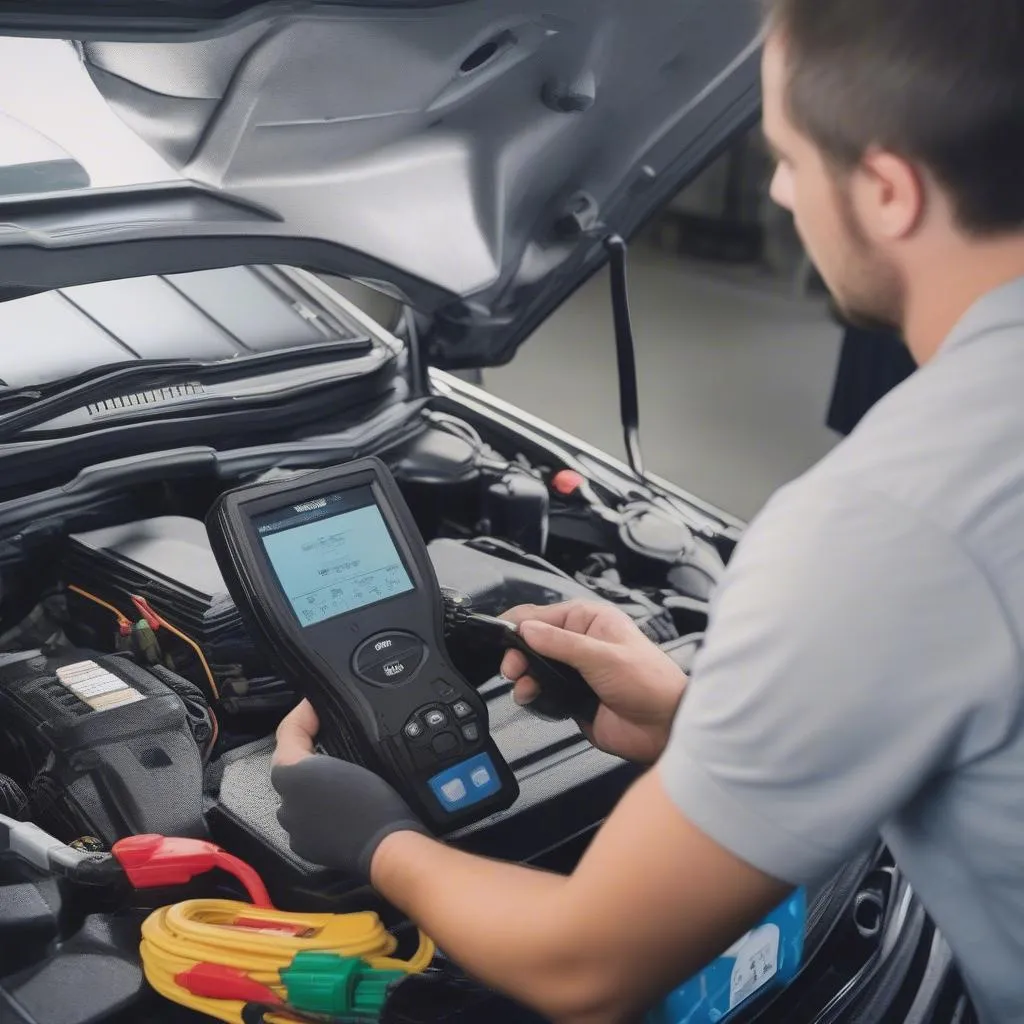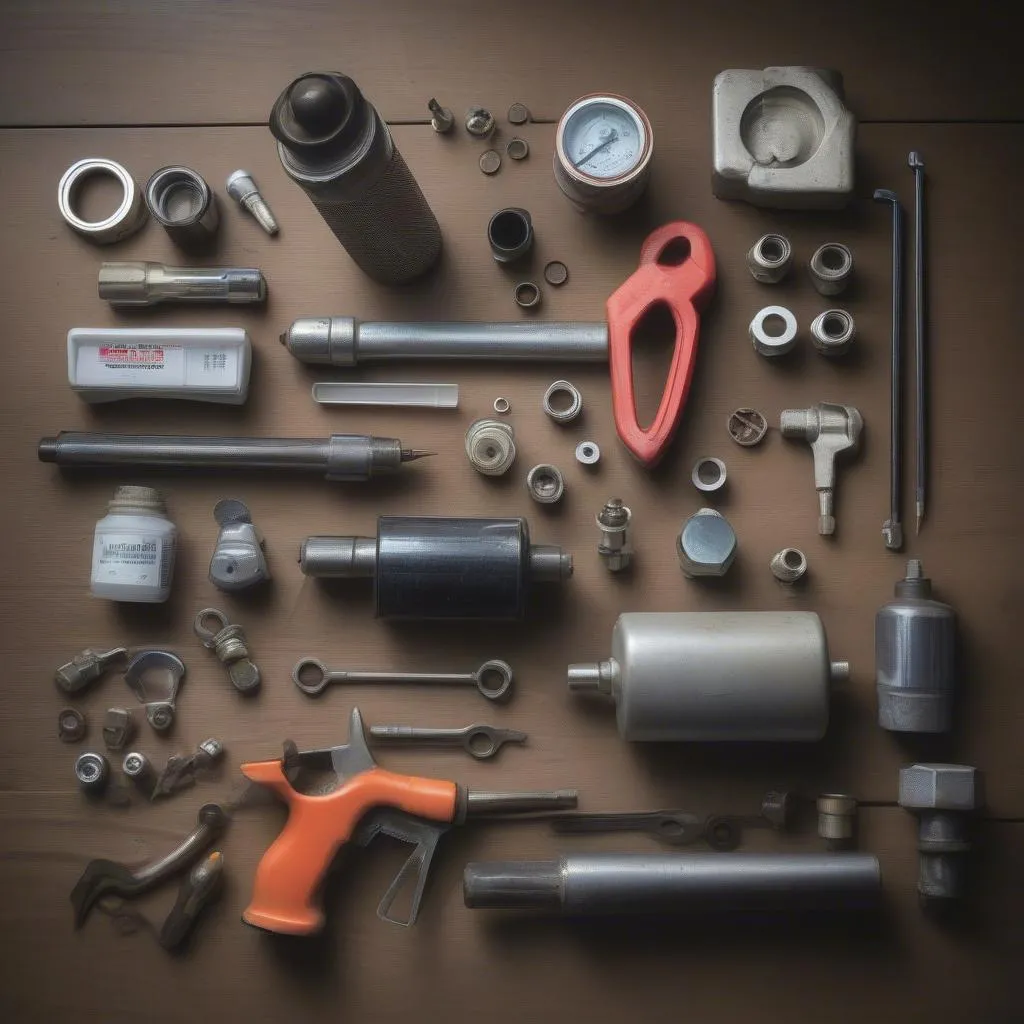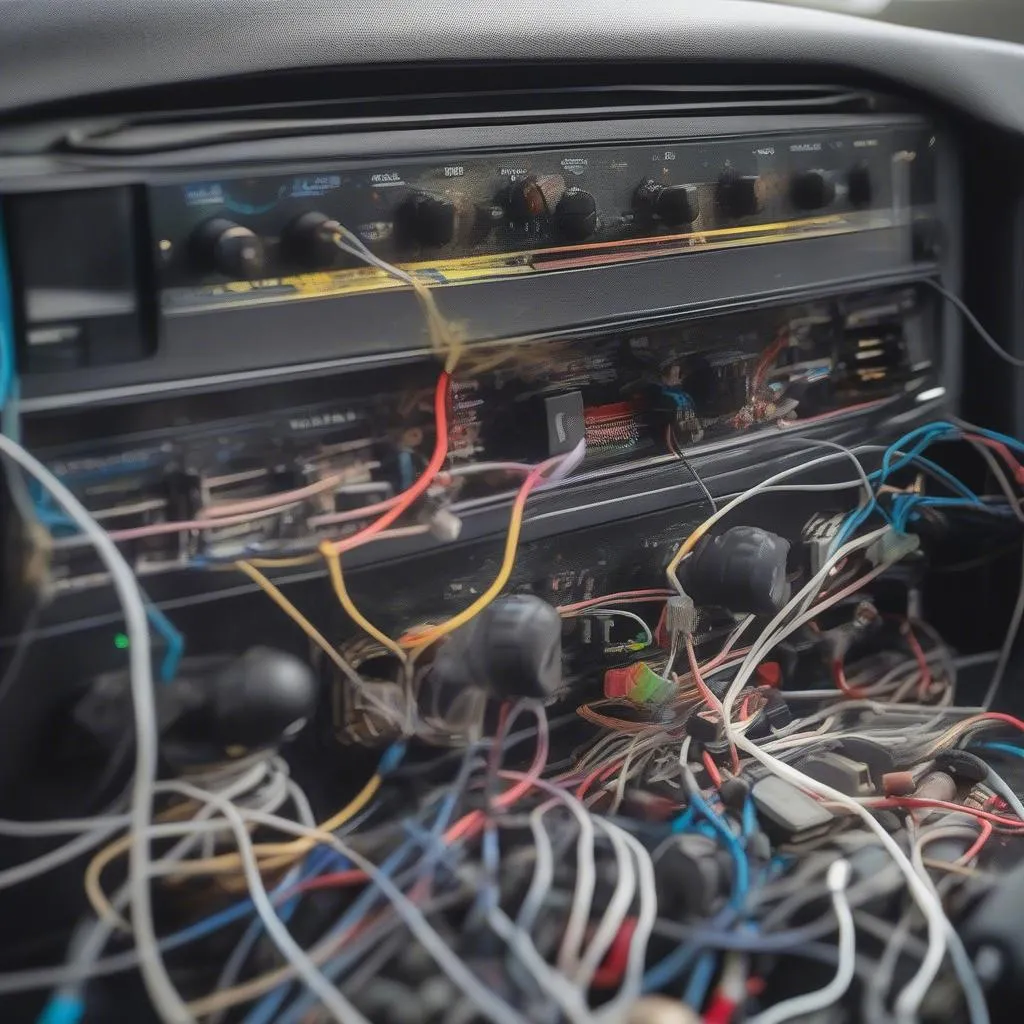Experiencing engine issues, particularly the dreaded P0088 code, in your Mercedes E320 CDI can be stressful. This code indicates “Fuel Rail/System Pressure – Too High,” often leading to reduced engine performance, rough idling, and even difficulty starting. But don’t worry, this guide will walk you through the possible causes and solutions to help you get your Mercedes running smoothly again.
Understanding the P0088 Code in Your E320 CDI
The P0088 code signals a problem within the fuel system, specifically that the fuel pressure is exceeding the manufacturer’s specified range. This can be caused by a variety of factors, and accurate diagnosis is crucial before attempting any repairs.
Common Causes of the P0088 Code
Before diving into solutions, let’s pinpoint the usual suspects behind the P0088 code in a Mercedes E320 CDI:
- Faulty Fuel Pressure Regulator: The most common culprit, a malfunctioning fuel pressure regulator, might fail to maintain the correct pressure, leading to excessive fuel delivery.
- Clogged Fuel Filter: A restricted fuel filter can hinder fuel flow, putting extra strain on the fuel pump and causing high pressure in the system.
- Failing Fuel Pump: A weak or failing fuel pump can struggle to maintain adequate pressure, triggering the P0088 code, particularly under heavy load.
- Wiring Issues: Damaged or corroded wiring in the fuel system can disrupt signals between the ECU and various components, including the fuel pressure sensor and regulator, causing erratic readings and potential pressure problems.
- Faulty Fuel Pressure Sensor: While less common, a malfunctioning sensor can send inaccurate readings to the ECU, leading to an incorrect diagnosis of high fuel pressure.
 Mercedes E320 CDI Engine
Mercedes E320 CDI Engine
Identifying the Problem: Symptoms and Diagnosis
Recognizing the symptoms associated with the P0088 code is key:
- Check Engine Light: The most obvious sign, the check engine light illuminating on your dashboard, indicates a problem detected by your car’s computer.
- Reduced Engine Performance: Noticeable power loss, especially during acceleration, can suggest a fuel pressure issue.
- Rough Idle: An uneven or rough idling engine could point to a problem with fuel delivery and pressure regulation.
- Hard Starting: Difficulty starting the engine, especially when cold, might signal insufficient fuel pressure.
Diagnosis:
To confirm the P0088 code and delve deeper into its cause, you’ll need an OBD-II scanner. This device plugs into your car’s diagnostic port and retrieves stored trouble codes. Once the P0088 is confirmed, further inspection is necessary to pinpoint the exact source of the issue. This might involve visually inspecting the fuel system components, checking fuel pressure with a gauge, and testing electrical circuits.
 OBD Scanner Diagnosing Car
OBD Scanner Diagnosing Car
Tools and Materials for Repair
Before embarking on the repair journey, gather the following tools and materials:
- OBD-II Scanner: To read and clear trouble codes.
- Socket Set and Wrenches: For removing and installing various components.
- Screwdrivers: For dealing with clamps and connectors.
- Fuel Pressure Gauge: To measure fuel pressure accurately.
- Multimeter: To test electrical circuits and components.
- Safety Glasses and Gloves: To protect yourself during the repair process.
- Clean Rags: To wipe away any spilled fuel and keep things tidy.
- Replacement Parts: Depending on the diagnosed issue, this might include a new fuel pressure regulator, fuel filter, fuel pump, or related components.
 Mechanic Tools Car Repair
Mechanic Tools Car Repair
Fixing the P0088 Code: Step-by-Step Guide
Remember, safety first! Before working on your vehicle, disconnect the negative battery cable to prevent electrical mishaps.
-
Diagnose the Root Cause: Use your OBD-II scanner and perform a visual inspection to determine the specific component causing the P0088 code.
-
Replace the Faulty Component:
-
Fuel Pressure Regulator:
- Locate the regulator, usually on the fuel rail.
- Carefully relieve fuel pressure in the system.
- Disconnect the vacuum line and fuel lines attached to the regulator.
- Remove and replace the regulator with a new one.
- Reattach the lines and secure them properly.
-
Fuel Filter:
- Find the fuel filter, often located along the fuel line or near the fuel tank.
- Relieve fuel pressure.
- Disconnect the fuel lines on both ends of the filter.
- Remove and replace the filter, ensuring proper flow direction.
- Reconnect the lines securely.
-
Fuel Pump:
- Access the fuel pump, typically located inside the fuel tank.
- Disconnect the electrical connector and fuel lines.
- Carefully remove the old pump and install the new one.
- Reconnect everything, ensuring a tight seal.
-
Wiring Issues:
- Thoroughly inspect the wiring harness for any damage, corrosion, or loose connections.
- Repair or replace any faulty wiring as needed.
- Ensure all connections are clean and secure.
-
Fuel Pressure Sensor:
- Locate the sensor, usually on the fuel rail near the injectors.
- Disconnect the electrical connector.
- Carefully remove the sensor and install the new one.
- Reconnect the electrical connector.
-
-
Clear the Codes: After replacing the faulty component, use your OBD-II scanner to clear the stored trouble codes.
-
Test Your Work: Start your engine and check for leaks. Monitor your dashboard for any warning lights.
If the P0088 code persists, it’s best to consult a qualified mechanic to diagnose and repair the issue accurately.
FAQs:
Q: Can I still drive my E320 CDI with the P0088 code?
A: While you might be able to drive short distances, it’s not recommended. Driving with high fuel pressure can lead to engine damage and reduced fuel economy.
Q: Are there aftermarket diagnostic tools like those from Cardiagtech that can help with the P0088 code?
A: Yes, many reputable brands like CARDIAGTECH offer advanced OBD-II scanners and diagnostic software specifically designed for Mercedes-Benz vehicles. These tools can provide more detailed information and troubleshooting guidance.
Q: How often should I replace my fuel filter?
A: It’s good practice to replace your fuel filter every 30,000 miles or as part of your regular maintenance schedule.
Q: Can a software update fix the P0088 code?
A: In some cases, a software update from Mercedes-Benz might address certain issues related to fuel system management. However, this is less likely to be a solution for a purely mechanical problem like a failing fuel pressure regulator.
Conclusion
Addressing the P0088 code in your Mercedes E320 CDI requires a systematic approach involving accurate diagnosis and appropriate repairs. Remember, while this guide provides general guidance, consulting a qualified mechanic, especially if you’re uncomfortable working on your vehicle, is always recommended for a safe and effective solution.

